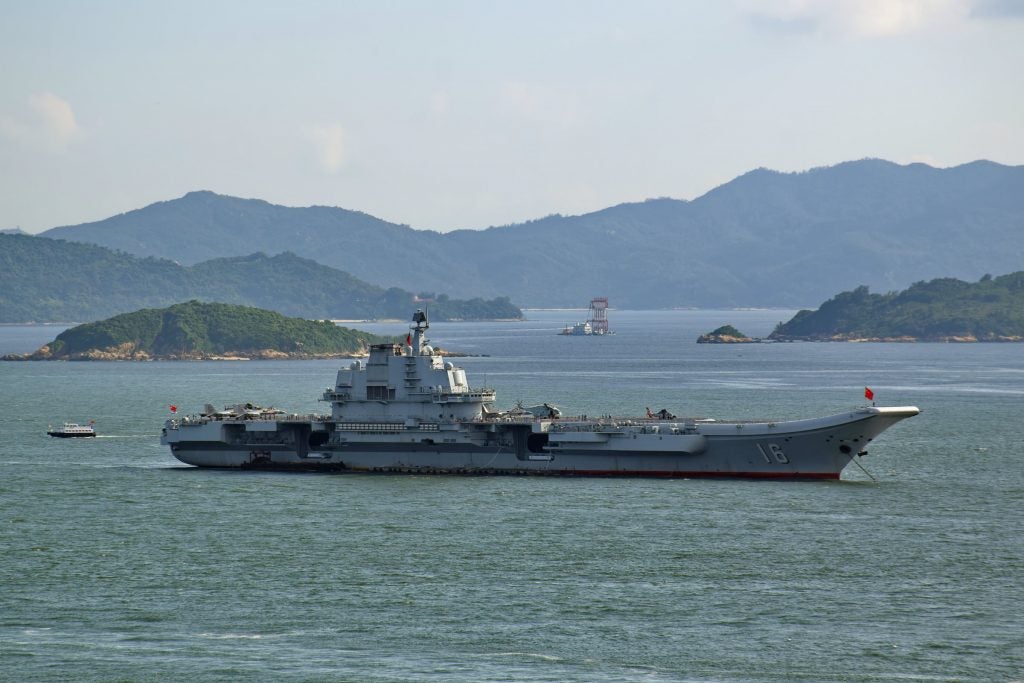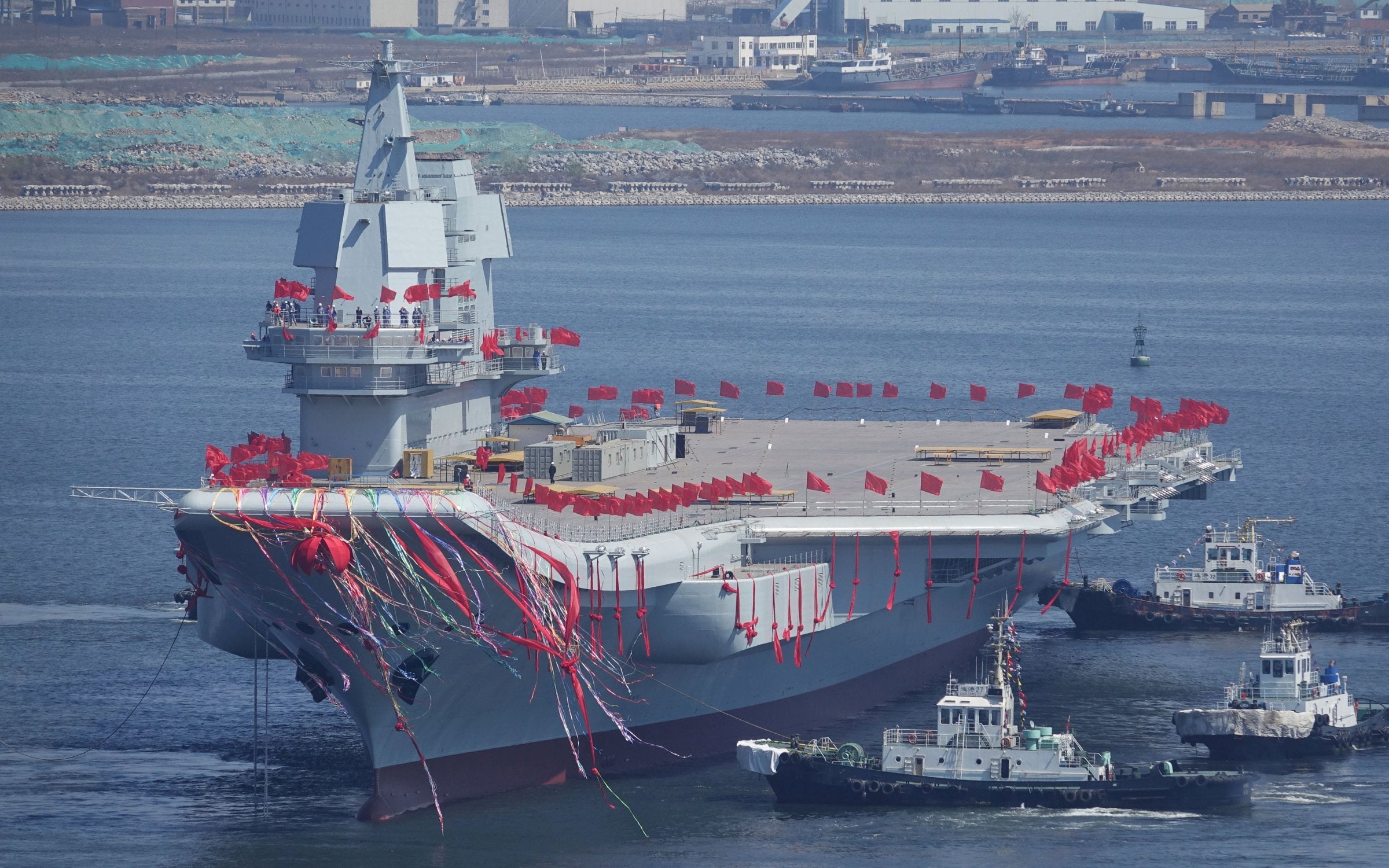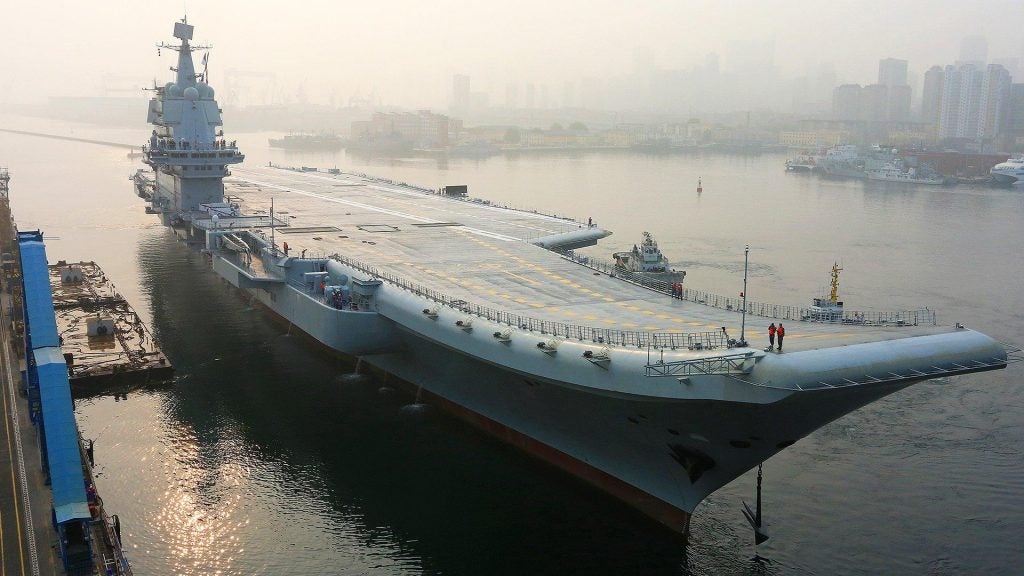China’s Newest Carrier Sets Sail for Sea Trials
On the 13 May China’s second aircraft carrier has set sail for its first round of sea trials. The Type 001A class carrier, based upon the Soviet Kuznetsov class, follows the Type 001 Liaoning which was refitted from the aged Soviet carried Riga – sold by Ukraine as the Varyag in 1998.
The Liaoning was subject to a massive overhaul, essentially taking a rusting hulk and turning it into a serviceable combat asset capable of launching Chinese J-15 jets. This was a learning exercise for China’s navy and shipbuilding industry – taking the Cold War hulk and learning everything they could from it. The new, yet to be named, Type 001A is a very different beast.

The Type 001A is China’s first domestically produced carrier and while it owes much to the reverse engineering of the Riga and the lessons learnt with the Liaoning, it is very much China’s first step towards an entirely domestically designed air craft carrier.
Here’s a video from China’ CCTV+ network that shows the 001A leaving port:
The Type 001A was officially launched from Dalian shipyard on 26 April 2017, and is believed to be capable of carrying up to 40 aircraft and displace up to 70,000 tonnes, roughly 5,000 more than the Liaoning. While technical details on the vessel are sparse from the available photographs its clear to see some differences.
Unlike the Liaoning, the Type 001A, has a second windowed deck command and control deck, in its island separating the bridge and flight operations to simplify communications and streamline command of ship and air elements. The upper radar elements of the island have also been redesigned to give cleaner lines. The Drive reports that the 001A moves to a 12-degree ski-jump flight deck slope instead of the Liaoning’s 15-degrees. The 001A also has more space for aircraft and subsystems.

The ship’s systems and electronics are entirely modern, not relying on established Soviet infrastructure like the Liaoning. This will improve the 001A’s efficiency but will still require a 5,000 man complement. China’s carriers have not yet entered the Nuclear age and the 001A is powered by conventional steam turbines which give the vessel a top speed of 31 knots.
While the new carrier was originally scheduled to enter service with the People’s Liberation Army Navy in 2020, early delivery is now believed likely, with the ship entering service as early as late 2018/early 2019. China’s next carrier is said to be an entirely indigenous design, the Type 002, with a projected displacement of 80,000 tonnes and a length of 320 metres. The Type 002 is already reported to be followed by China’s next generation carrier, the Type 003 nuclear carrier. It remains to be seen if China follow build a second Type 001A before the 002 is completed.

